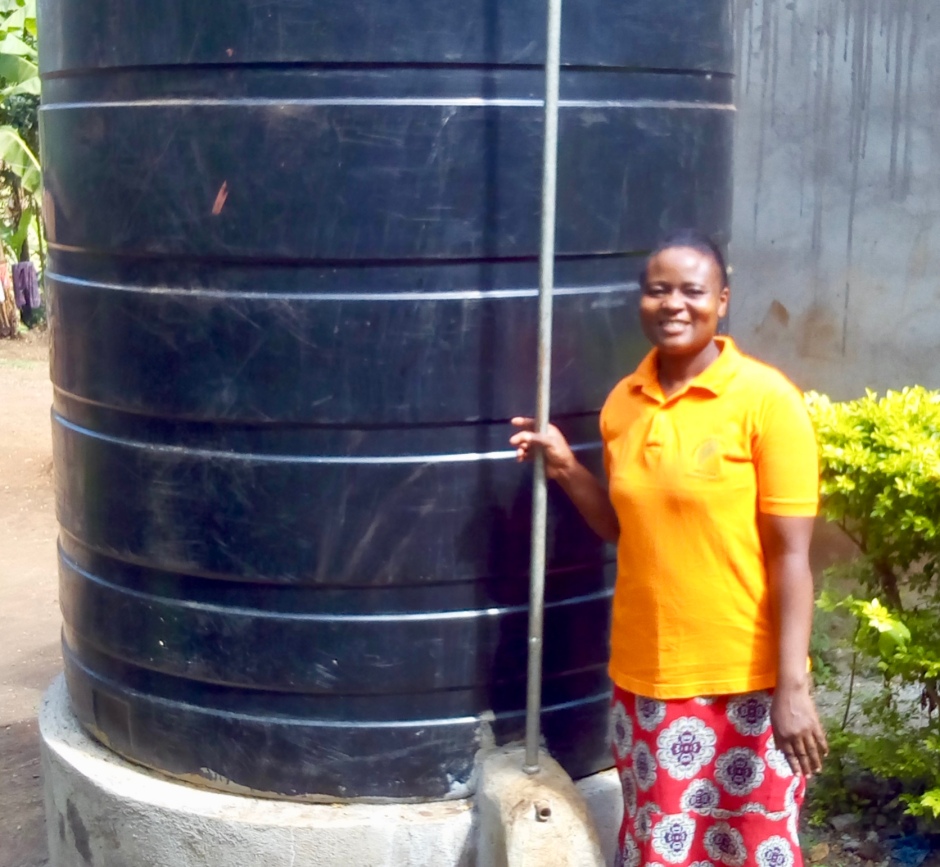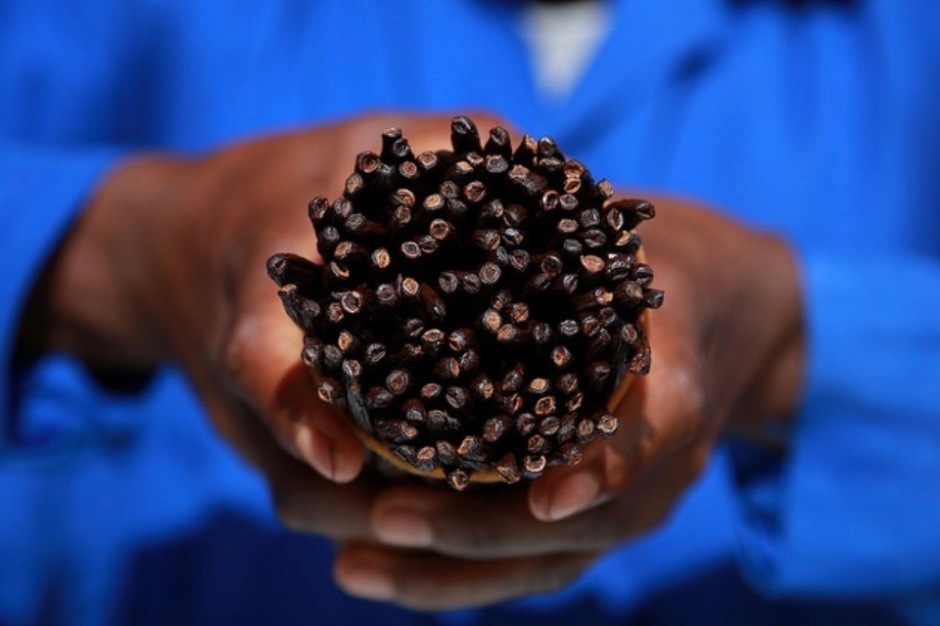Cinnamon Crumb Muffins 2 cups plus 1/3 cup flour, divided 2/3 cup plus 1/4 cup sugar, divided 1 1/2 teaspoons baking powder 1/2 teaspoon baking soda 1/4 teaspoon nutmeg, ground 1 cup chunky applesauce* 1/4… More
Vanilla Curing
Once NEI’s farmers harvest their vanilla pods, they are ready to be brought back to our factory for curing. When our field officers collect the harvest, all details about the batch are recorded, including who the farmer is and where their farm is located. This allows NEI to trace the vanilla from “farm to plate.”

When the pods arrive at the factory, they are still green and must be graded according to size and appearance. After grading, all of the pods are washed. The next step is called blanching. This is when the pods are immersed in hot water, approximately 70 degrees Celsius. The temperature and time varies depending on the grade.
After the pods are blanched, they are wrapped in a clean blanket and stored in a wooden blanching box for 48 hours. During this stage, they begin to turn from green to brown.
When 48 hours have passed, it is time to begin the sun-drying stage. Each day, for a total of 28 days, the pods are spread out in the sun on a clean blanket for no more than two hours at a time. This is a labour intensive process. If there is not enough sun, a tarp is placed over the pods to trap any existing heat. During this stage, the pods turn completely black and the characteristic vanilla aroma and flavour starts developing. Regular monitoring is done during this period to measure temperature and moisture content.
Once sun-drying is complete, the pods are brought inside the factory to be sorted. They are organized into 1/2 kilogram bundles, wrapped in wax paper, and placed in a wooden box. The moisture content of the pods is measured every two weeks, and the humidity in the room is well controlled. During this stage, the pods complete the fermentation to finalise the development of the full vanilla aroma.
Six months after the process begins, the pods are ready for sale or extraction. Grades one, two and three pods are sold through distributors and retail outlets.
The grade four pods remain with NEI slightly longer. They are used to produce our Epicurious Hedgehog Vanilla Extract. To do this, pods are ground and then percolated at low temperature through distilled water and sugar cane ethanol in large tanks. This process takes approximately fourteen days, and the extract is then aged for several months for the full flavour to develop and the ethanol to mellow.
Climate Change Mitigation and Adaptation at NEI
Because Kilimanjaro and its economy are largely dependent on the smallholder-based agriculture sector, they are particularly vulnerable to the impacts of climate change. Approximately 90% of Tanzania’s population, as with the rest of Sub-Saharan Africa, is dependent on rain-fed crops for their food security. Climate change negatively impacts such crop production through rainfall variability and temperature shocks, threatening the livelihoods of farmers (Arslan, Belotti & Lipper, 2017; Moore et al., 2011).
Natural Extracts Industries (NEI) is working hard to address this. Our work firstly addresses deforestation through agroforestry. Because vanilla requires shade to grow, forest conservation is promoted throughout our network of farmers. This is vital, as cutting down forests releases the carbon stored within them into the atmosphere, a
process accounting for 17% of carbon emissions globally (Gorte & Sheikh, 2010). An estimated 500 to 750 tonnes of carbon are stored in each hectare of forest, with Tanzania losing approximately 400,000 hectares every year (Khatun et al., 2015; Komba & Muchapondwa, 2015). These emissions have drastically changed the local climate.
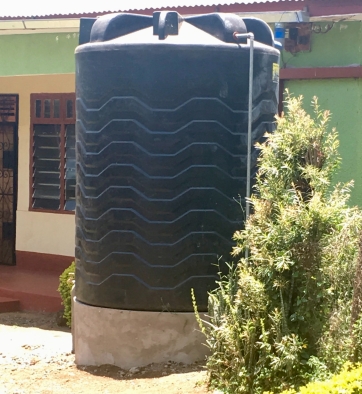
In order to help our farmers mitigate the effects of climate change on their vanilla and other crops, we have begun implementing several strategies, one of which is our rainwater harvesting project, funded by our partner organization MEDA. Farmers are selected for the program based on their level of water-stress, with priority given to our women farmers as well. They receive a rainwater harvesting tank and all required infrastructure installed at their farm free of charge. The size of the tank varies based on the number of vanilla vines each farmer grows.
 After receiving tanks from NEI, farmers are trained both on how to use the tanks and on how to most effectively utilize the harvested water for their irrigation purposes. Each vanilla vine requires approximately one litre of water a week, which can be achieved by implementing a bottle-drip irrigation system. NEI has already installed 74 tanks to 74 farmer beneficiaries, and aims to reach a total of 200 tanks by the end of 2018. In addition, NEI is also repairing water furrows.
After receiving tanks from NEI, farmers are trained both on how to use the tanks and on how to most effectively utilize the harvested water for their irrigation purposes. Each vanilla vine requires approximately one litre of water a week, which can be achieved by implementing a bottle-drip irrigation system. NEI has already installed 74 tanks to 74 farmer beneficiaries, and aims to reach a total of 200 tanks by the end of 2018. In addition, NEI is also repairing water furrows.
Farmer Profile:
Mary Ulomi lives in the village of Uswaa in Kilimanjaro with her husband and five children. Her livelihood is solely dependant on agriculture. Using her extra income generated from growing vanilla with NEI, Mary was able both to send her children to school and invest in other economic activities such as maize cultivation.
In the past, however, Mary has struggled with drought at her farm. She has even lost vanilla plants, which dried up due to the lack of water. In order to address this issue, NEI installed a rainwater harvest tank at Mary’s farm in August, and provided her with training on how to use her tank. She is now utilizing bottle-drip irrigation for her vanilla as well. Since the installation of the tank, her plants have remained in good health and she hopes to achieve increased yields in the coming season.
References
Arslan, A., Belotti, F., & Lipper, L. (2017). Smallholder productivity and weather shocks: Adoption and impact of widely promoted agricultural practices in Tanzania. Food Policy, 69, 68-81. doi:10.1016/j.foodpol.2017.03.005 (http://www.sciencedirect.com/science/article/pii/S0306919217301872)
Gorte, R. W., & Sheikh, P. A. (2010). Deforestation and Climate Change. Congressional Research Service. (http://forestindustries.eu/sites/default/files/userfiles/1file/R41144.pdf)
Khatun, K., Gross-Camp, N., Corbera, E., Martin, A., Ball, S., & Massao, G. (2015). When Participatory Forest Management makes money: insights from Tanzania on governance, benefit sharing, and implications for REDD. Environment and Planning A, 47(10), 2097-2112. doi:10.1177/0308518×15595899 (http://journals.sagepub.com/doi/abs/10.1177/0308518X15595899)
Komba, C., & Muchapondwa, E. (2016). An analysis of factors affecting household willingness to participate in the REDD programme in Tanzania. Climate and Development, 1-14. doi:10.1080/17565529.2016.1145098 (https://www.researchgate.net/publication/296475511_An_analysis_of_factors_affecting_household_willingness_to_participate_in_the_REDD_programme_in_Tanzania)
Moore, N., Alagarswamy, G., Pijanowski, B., Thornton, P., Lofgren, B., Olson, J., . . . Qi, J. (2011). East African food security as influenced by future climate change and land use change at local to regional scales. Climatic Change, 110(3-4), 823-844. doi:10.1007/s10584-011-0116-7 (https://link.springer.com/article/10.1007/s10584-011-0116-7)
It’s Pollination Season in Kilimanjaro!
This September, NEI held a special training for our Farmer Champions teaching them how to pollinate vanilla. This is such a vital part of the vanilla growing process that the training will be repeated three times. Our Farmer Champions will disseminate this knowledge throughout our entire network of more than 1600 farmers, ensuring that each farmer maximizes their harvest, and therefore their income!
Hand pollination of vanilla is a very delicate process. Each flower blooms only once and must be pollinated within a 6 to 8 hour window of doing so. To complete the pollination, our farmers use a toothpick to push up the rostellum, a very small flap in the centre of the flower. This allows pollen to be passed from the anther to the stigma.
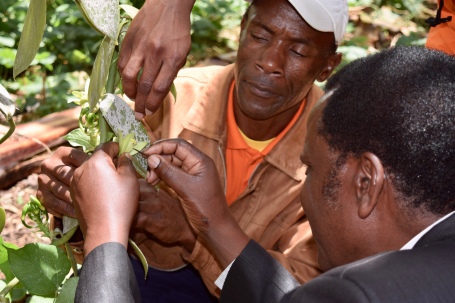
At our training, farmers receive hands-on instruction from our field officers on how to do this correctly. Each farmer can practice their pollination skills, as well as provide support and advice to one another. Pollination is so important because it enables the vine to grow long green fruits, commonly referred to as pods. These green pods are what is harvested and then cured to make black vanilla pods, which in turn are used to make the Epicurious Hedgehog Vanilla Extract you know and love!
The reason vanilla must be pollinated by hand is a rather interesting one. Vanilla, which originates from the tropical forests of Mexico, can only be pollinated in nature by a very specific type of bee known as the melipona bee.
When Mexico was colonized, Europeans fell in love with the flavour and took vanilla plants back with them to grow in their tropical African colonies. Since the melipona bee does not exist elsewhere in the world, the vanilla was not pollinated and, therefore, did not produce fruit.
Europeans tried unsuccessfully to introduce the melipona bee, and it wasn’t until 1836 that Belgian botanist Charles Morren discovered it was possible to pollinate vanilla by hand. Since then, vanilla has been enjoyed as a delicious flavour worldwide.
References
Howell, M. (2016, May 05). Hand-pollination used to produce vanilla. Retrieved September 26, 2017, from http://newsok.com/article/5496227
Kull, T., Arditti, J., & Wong, S. M. (2009). Orchid biology: reviews and perspectives, X. New York: Springer.
A Sweet Bridge For African Farmers to Access Demand From Global Markets
Check out this great blog post by our managing director Juan on how #NEI is creating shared valued with Nestlé in Tanzania! #CSVPrize #KilimanjaroVanilla
THE BROWNIE EXPERIMENT
We often receive questions about how to use our cacao extract because it seems like it does the same thing as cocoa powder. But it doesn’t! It can be used to lightly flavour other recipes or enhance already chocolate recipes! It is great to add to chocolate cakes, brownies, chocolate drinks and other chocolatey foods! You can really tell the difference between a plain chocolate recipe and an Epicurious Hedgehog Cacao Extract recipe!
Here at the Natural Extracts Industries Ltd office, we decided this was a very important science experiment that needed to be conducted. We sacrificed part of our day to eat warm, chocolatey brownies, all for you!
We had 3 types of brownies to try:
- A basic brownie recipe with Epicurious Hedgehog Vanilla Extract
- Brownies with Epicurious Hedgehog Vanilla Extract and Orange Extract
- Brownies with Epicurious Hedgehog Vanilla Extract and Cacao Extract
The basic brownie recipe was, of course, delicious! The vanilla extract is necessary to round out the chocolate, add a naturally sweet flavour and cover any possible “eggy” flavours that you wouldn’t want in a dessert.
The brownies with orange extract were very unique! The vanilla extract is there for the same purposes as before and to help cut the bitterness that citrus can cause. The orange extract resulted in a bright flavour that pleasantly surprised us in our blind taste test! If you are a fan of chocolate and orange pairings, then you definitely need to try adding 1/2 teaspoon of Epicurious Hedgehog Orange Extract to your next batch of brownies.
The last brownie was unanimously voted as the office’s favourite brownie in the blind taste test. In this brownie, the vanilla was once again there for the same purposes, but the Epicurious Cocoa Extract took the brownie to a whole new level of deliciousness! The cacao extract made the chocolate flavour extra strong and gave it a rich, dark flavour!
This is a must try in your next batch of brownies or any other chocolate recipe!
Check out our website, to learn where you can pick up Epicurious Hedgehog Extracts.
Announcing the NEI Scholarship Winner!
Natural Extracts Industries, Ltd is proud to announce the recipient of our scholarship prize this year. Mama Lwise Ndosa is a 62-year-old farmer of Uswaa village in Machame just east of the Kilimanjaro region of Tanzania. Mama Ndosa who is part of our farmer network was our top producing farmer in the last harvest.
NEI’s commitment to its farmers means the company invests in and contributes to improving the lives of farmers in our network. By awarding a scholarship to a dependent of the most successful vanilla farmer we believe we can empower the next generation with additional skills. The scholarship provides a schoolgirl of the best farmer a 1-year scholarship to primary or secondary education. Being a grandparent with no school aged children, Mama Ndosa has chosen to support a child of her late sister through this program.
In the picture above, Mama Lwise Ndosa’s local Farmer Champion accepts her prize for her at a NEI meeting.
It was her husband who first registered with NEI, having grown vanilla since 2011. However, he stopped tending to the vines and Mama Ndosa took over from him having seen the benefits of vanilla farming. Mama Ndosa is committed to NEI because of the support of the Farmer Champions, subsidised vanilla vines and continuous training in vanilla husbandry.
Her successful harvest of last year means she feels motivated to carry on and expects another great harvest this year, despite the drought in the region. We will be watching to see if she can match her harvest last year and win another scholarship!
Watch this video of Mama Ndosa talking about her experience selling her vanilla to NEI:
Tracking Vanilla In Tanzania
At Natural Extracts Industries, Ltd. we are proud of the high-quality standards we have set for sustainable vanilla production in Tanzania. Each year we strive to improve the processes from planting, cultivation, pollination, harvesting, purchasing and finally the curing. How vanilla from other countries comes to market has been the target of mystery and sometimes even stories of farmer exploitation.
Aarti Mahajan, who joined the NEI team to lead the initiative to deploy an ICT platform, called Source Trace, to our farmer network says, “Source Trace provides complete visibility of our vanilla from the farm to our factory. The ease of use of the interface allows us to distribute tablets with the Source Trace application to our lead farmers. Source Trace is a powerful tool that allows the NEI team to access real-time data anytime from anywhere in the world.”

March Cyclone in Madagascar
Our thoughts and prayers are with the people of Madagascar as they recover from the Tropical Cyclone Enawo that hit the island in early March. It was a very powerful storm, and the due to the remote nature of the areas hardest hit an accurate assessment of the impact is difficult.
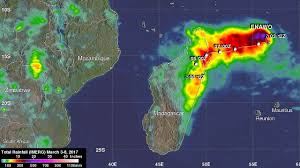
The storm hit directly in the country’s primary vanilla-producing region, and this has created wild speculation on the future price of vanilla which has been rising over the last year. The immediate impact has been the increasing prices of vanilla in the global market, in part because of concerns that the beans salvaged from the storm will be brought prematurely to market.
For Natural Extracts Industries, Ltd. and the farmers in our network, there has been an impact as well. The farmers have been inundated with requests to purchase vanilla pods, and this drives up the cost of our raw vanilla as well.
We would like to assure all our customers that we will continue to source, process and cure only the highest quality of vanilla to maintain the integrity of our products. Until we can assess the long-term impact of the situation, we will continue to supply the customers who have been supporting our mission and our farmers.
Please take a moment to read further these reports about the storm, and its impact on Madagascar.
Featured photo: Tropical Cyclone “Enawo“ on March 3, 2017. Credit: NASA/NOAA/DoD Suomi NPP/VIIRS
What Do Seaweed and Vanilla Have in Common?
Depending on the time of day you are relaxing on the shores of Paje, Zanzibar you may see some very different settings.
When the tide is high, the beach feels busier. You can hear music from a close by restaurant, waves crashing and children playing. The water may come up to only a few meters away from your beach towel, and to your right, you can see dozens of kite surfers!
When the tide retreats the beach is a whole new place. People leave the beach to find their hotel pools, and the atmosphere becomes peaceful and calm. You no longer hear the waves because the water is so far away. You can walk 40 minutes out into the ocean, where the water would have once been as high as your shoulders.
Among this peacefulness, you will notice something strange out where the water was once a few feet deep. Perfectly lined sticks poke up from the sand. 
This is where the Seaweed Center grows their seaweed! When the tide is low, they are able to go out and collect the Eucheuma Spinosum, the particular type of red seaweed used in their very special products! The seaweed has many natural health benefits like antioxidants, antibacterial and antiviral properties, high levels of vitamin E, as well as being a natural source of collagen.

The Seaweed Center uses the seaweed to make soaps, body scrubs, body oils and even juice. (The scrubs smell heavenly!)You can stop by their beautiful store/production facilities to buy their products or get a tour! You get to learn how they make their natural soap and even join them to harvest the seaweed.

We think the Seaweed Center is excellent because they believe in supporting their community, sourcing organic and local materials in Tanzanian and using high-quality ingredients, just like NEI! They began 2013, and they have lots more plans for the future!
Check out their Facebook and definitely drop by to see them if you are in Zanzibar!
Get To Know NEI – Jeanne
After spending the last few years in Thailand and Myanmar working on social enterprises Jeanne joined our team as the VP, Business Development driving the strategy to build the Epicurious Hedgehog brand in East and South Africa. She brings experience from years of working at startups in US technology companies.
“What I love most about my job is meeting the farmers and their families and seeing the impact of a sustainable business model that respects both people and the earth.”
When she’s not in the office she can be found exploring the vast ecosystem that surrounds Kilimanjaro and getting out on game drives to see the animals in their natural habitat. Her favorite African animal? The warthog because they have such quirky personalities.






